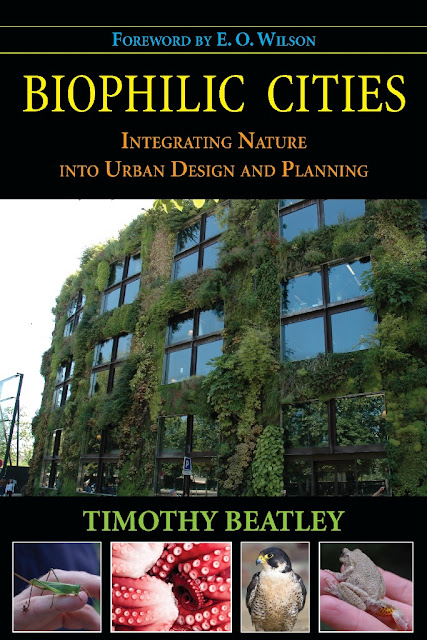Across the world, cities are bringing back nature to help address urban challenges. We are healthier when we are closer to nature. We have a greater respect for the environment that sustains us. We are more adaptable to change when we let nature do its work.
Join us for a free presentation by Dr. Timothy Beatley, renowned expert in sustainable city planning and author of the book BiophilicCities. Dr. Beatley is the Teresa Heinz Professor of Sustainable Communities, in the Department of Urban and Environmental Planning, School of Architecture at the University of Virginia, where he has taught for the last twenty-five years. He will share his experience and knowledge of cities across the world that have made strides to integrate nature into our neighborhoods and communities.
A Presentation on Biophilic Cities with
Dr. Timothy Beatley
January 18th, 2012
6:00-8:00 PM
Portland Northwest College of Art – Swigert Commons
1241 NW Johnson
Portland, OR 97209
This event is free and open to the public.
Sponsored by:
City of Portland’s Environmental Services and
Office of Healthy Working Rivers,
Illahee,
The Intertwine Alliance, and
The Urban Greenspaces Institute

was there anything interesting about this presentation?
I hate the language, the image on the cover, and I’ve seen an abbreviated presentation of the work in Biophilic Cities and thought it was at best a contemporary admonition that American cities should mimic rich, homogeneous, Northern European ones. I find this hugely problematic. Perhaps I am off-base (I usually am to some degree).
What did you like about it so much that you would post it here?
It’s happening on the 17th of January, so consider this more of a ‘heads up’ for folks locally.
I will report back, but have similar reservations – particularly the new-found love by many of biomimicry and biophilia. Here in Portland we like to mimic rich, homogeneous, Northern European cities, so he will probably be well received.
Hi Jason, 7 years later I’m curious about your current thoughts on this – I’ve read the book but haven’t come across any of Beatley’s more recent writing or speaking on the subject. It was some time ago but I remember thinking that the ideas he presents are valid for the most part, but somewhat fanciful in that he doesn’t address how they could realistically be applied on a global scale in a way that would make a measurable impact. I know there’ve been plenty of studies on how “green” in cities has significant health-related benefits, but what about environmental benefits? I have no doubt that making non-human life a more visible part of cities can strengthen environmental consciousness, even outside a Northern/Western context, but do we have a grasp of to what degree and how we can make it work in varied settings?
Another thing I don’t think Beatley addresses is the degree to which “native” vs. “generic” nature matters. I don’t even think E.O Wilson makes that distinction in Biophilia, but seems to me it’s an important one – recognizing and appreciating local/regional ecology would seem to have psychological benefits (reinforcing identity and maintaining variety/interest) not to mention ecological ones. (I have to say it I get a lot of negative or disinterested reactions when I ask people in our field this question – I get that a focus on “natives” can go too far and has had some ugly cultural parallels, but it seems to be a very worthwhile distinction to make, for multiple reasons.)